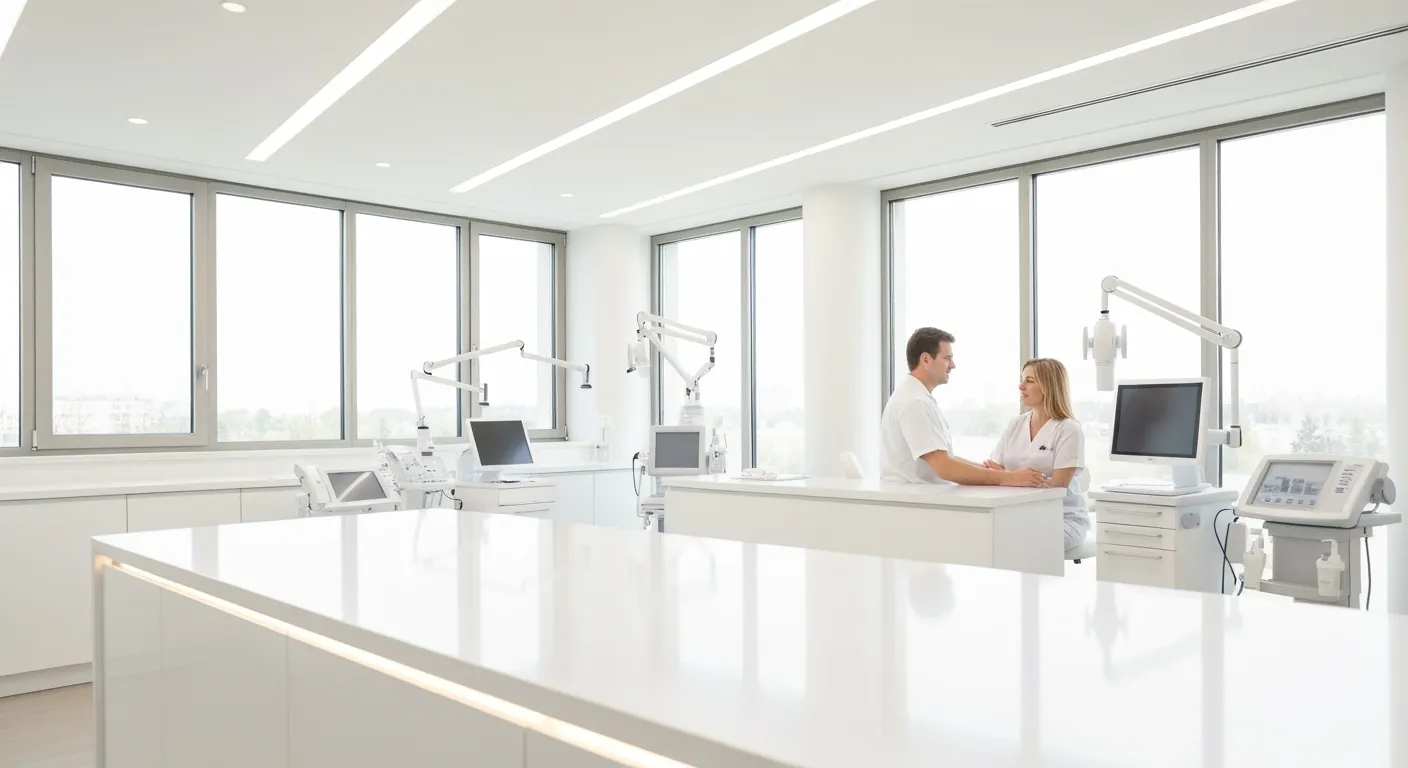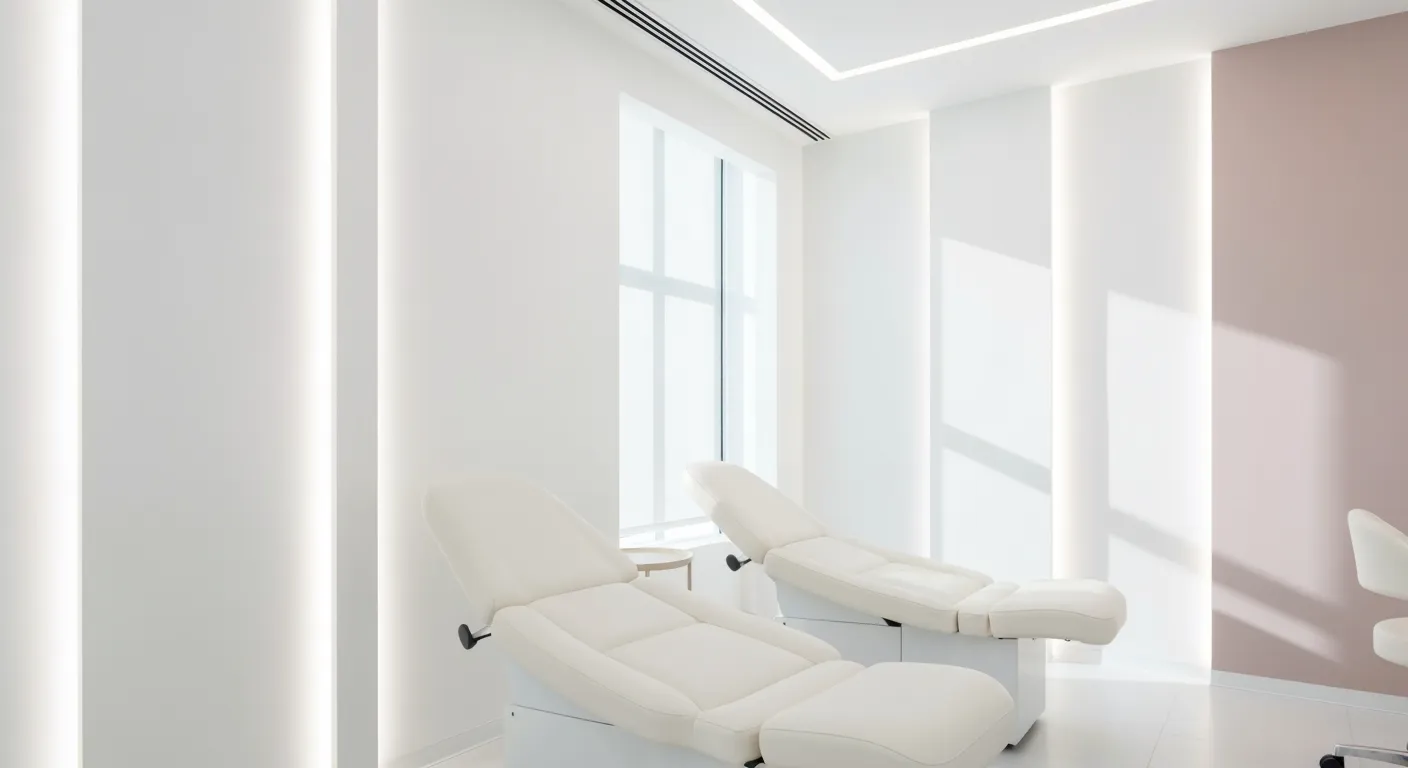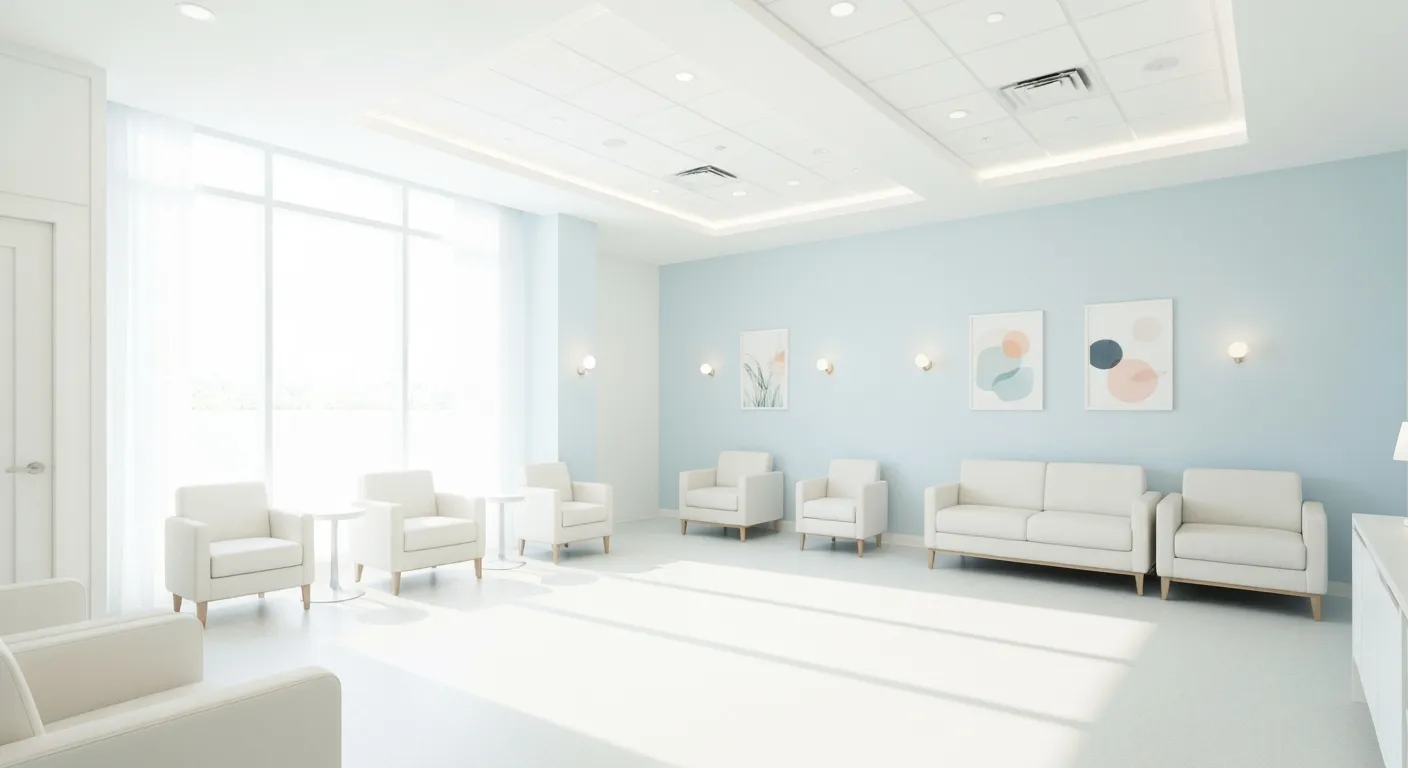
October 17, 2025
Breast Implant Size Guide: Find Your Perfect Fit
Discover our comprehensive breast implant size guide to choose the right CCs, profile, and shape. Make confident decisions for your ideal look!
Sep 19, 2025

Eyelid surgery, medically known as blepharoplasty, is a transformative procedure that rejuvenates the eyes by tackling drooping lids, excess skin, and puffiness. By addressing both aesthetic and functional concerns, it provides a more youthful, alert appearance while potentially improving vision obstructed by sagging eyelids. In this article, we explore what eyelid surgery involves, its benefits, and critical considerations for anyone evaluating this popular cosmetic and medical procedure.

Eyelid surgery, also known as blepharoplasty, is a procedure that aims to rejuvenate the eye area by removing excess skin, fat, and sometimes muscle from the eyelids. It helps create a more alert, youthful appearance and can also improve vision if sagging tissue obstructs sight. Usually performed on healthy adults, the surgery can be done for both cosmetic and functional reasons.
During the operation, incisions are made along natural eyelid creases or just below the lash line. Excess tissue is removed or repositioned, and the area is carefully sutured. The goal is to achieve natural-looking results with minimal visible scarring. Most procedures are completed in an outpatient setting, with recovery involving swelling and bruising that generally resolve within 1-2 weeks.
Results from blepharoplasty can last many years, often extending 7 to 10 years or longer. The procedure not only improves appearance but can also help restore function by clearing obstructed visual fields caused by drooping eyelids.
Good candidates are typically healthy adults facing excess eyelid skin, puffiness, or drooping that impacts their looks or vision. Ideal candidates have realistic expectations and are free of serious eye conditions or health issues that might hinder healing.
They should also be non-smokers or willing to quit before surgery, as smoking can impair recovery. A thorough assessment by an experienced surgeon—including eye exams and evaluation of eyelid anatomy—is essential to determine suitability.
Candidates usually experience stable eyelid skin quality and have concerns like ptosis or fat deposits that contribute to a tired or aged appearance. They are committed to following pre- and post-operative instructions to ensure optimal results.
Preoperative preparations include reviewing medical history, performing a comprehensive eye exam, visual field testing to assess the impact of drooping eyelids, eyelid photography for surgical planning, and stopping certain medications and smoking to reduce complication risks.
This evaluation helps the surgeon decide the most appropriate approach, whether upper, lower, or combined eyelid surgery, and ensures patient safety and satisfaction.
| Aspect | Details | Additional Notes |
|---|---|---|
| Common issues treated | Sagging skin, puffiness, bags, excess fat, drooping eyelids | Can improve vision and facial aesthetics |
| Purposes | Cosmetic rejuvenation, functional improvement of vision | Addressing both appearance and sight needs |
| Ideal candidates | Healthy adults with excess eyelid tissue causing appearance or vision problems | Must have realistic expectations |
| Preoperative steps | Medical assessment, eye exam, visual tests, medication review, quitting smoking | Ensures safety and proper planning |
This careful evaluation process ensures that patients are well-informed and suitable for blepharoplasty, helping them achieve satisfying, long-lasting results.

Eyelid surgery, also known as blepharoplasty, encompasses various techniques designed to enhance or restore the appearance and function of the eyelids. There are procedures tailored to upper, lower, or both eyelids, each targeting specific issues such as excess skin, fat herniation, and sagging.
Traditional approaches involve making incisions along natural eyelid creases for upper eyelid lifting or just below the lash line for lower eyelids. These allow for precise removal of excess skin, muscle, and fat, resulting in a natural look with minimal visible scarring.
Minimally invasive techniques are increasingly popular. Laser-assisted surgery uses focused light to make precise cuts with less bleeding and quicker healing. The transconjunctival approach involves internal incisions inside the lower eyelid, which leaves no visible external scars and is often used for fat removal or repositioning without removing skin.
Different surgical options include pinch blepharoplasty, where small skin sections are excised and sutured, and anchor blepharoplasty, which involves repositioning fat pads and tightening muscles for a more enduring change.
For cases of eyelid drooping, ptosis repair is performed to elevate the eyelid.
Procedures can also involve fat transfer—either removing excess or repositioning fat to restore youthful fullness—increasing flexibility for natural results.
Each technique is chosen based on individual anatomy, aging patterns, and aesthetic goals. Surgeons assess whether to emphasize skin removal, fat repositioning, or muscle tightening.
Recently, there’s been a trend toward less invasive methods that preserve or restore fatty tissue rather than remove it, aiming for natural-looking outcomes that age gradually.
In conclusion, the variety of surgical methods available allows for customized treatment plans that address specific eyelid issues while minimizing visible scars and recovery time.

Eyelid surgery, or blepharoplasty, offers numerous benefits in restoring a youthful appearance by removing excess skin, fat, and tightening muscles around the eyes, resulting in a more open, alert, and refreshed look. It can reduce sagging, puffiness, and bags under the eyes, which often contribute to an older or tired appearance, thereby enhancing overall facial aesthetics. Additionally, the procedure can improve peripheral vision by correcting eyelid drooping that obstructs sight and can boost self-confidence and emotional well-being. The scars from the surgery are minimally visible, hidden within natural eyelid creases, and the results are long-lasting, typically several years or more. Overall, eyelid surgery not only restores a youthful look but also improves eye function and visual comfort when sagging eyelids interfere with vision.
Eyelid surgery, or blepharoplasty, carries several potential risks and complications. Common issues include infection, bleeding, dry or irritated eyes, swelling, bruising, and temporary vision disturbances such as blurred or double vision. Serious but rare complications can involve injury to eye muscles, scarring, ectropion (outward turning of the eyelid), eyelid retraction, lagophthalmos (difficulty closing the eyes), and in extreme cases, vision loss or blindness. Other potential postoperative concerns are asymmetry, pigmentation changes, and the need for revision surgery. It is essential to discuss these risks thoroughly with a qualified surgeon prior to the procedure to understand individual risks and ensure proper management.
Recovery after eyelid surgery typically involves swelling, bruising, and mild discomfort that last about 1 to 2 weeks, with swelling gradually decreasing during this period. Patients are advised to keep their head elevated, use cold compresses, and avoid strenuous activities to reduce swelling and promote healing. Most individuals can return to work and normal activities within 10 to 14 days, though residual swelling and incision lines may take several weeks to months to fully fade. Sutures are usually removed between days 7 and 10, and makeup can generally be applied after two weeks. Complete healing, including final appearance and incision line fading, may take several months, often 6 to 12 months, with long-term results visible as swelling subsides and tissues settle.
Choosing a skilled, board-certified facial plastic surgeon is vital to achieving natural-looking results and minimizing risks. Reviewing credentials, experience, and before-and-after photos helps ensure the surgeon’s expertise matches your aesthetic and functional goals. Proper preoperative preparation, such as a thorough medical history review, eye examination, visual field testing, and stopping certain medications or smoking, helps optimize surgical safety and outcomes. These steps are crucial to reduce the risk of complications and support a smooth recovery process, making careful selection and preparation essential parts of eyelid surgery planning.
Before and after photos are crucial tools in evaluating the results of eyelid surgery, offering a clear visual understanding of potential outcomes. These images demonstrate the tangible improvements that can be achieved, such as the removal of sagging skin, reduction of under-eye bags, and a more awake, youthful appearance. They help prospective patients set realistic expectations by showcasing the range of results across different ages and individual conditions.
By closely examining these photos, individuals can assess the skill and consistency of the surgeon performing the procedure. Reputable sources like the American Society of Plastic Surgeons provide galleries of standardized before and after images, ensuring credibility and reliability.
Photos also illustrate the healing process over time. Typical recovery stages can be seen—from initial swelling and bruising within the first week to more refined results observed several months later. This visual timeline offers insight into what patients can expect as their eyelids heal and final results emerge.
Ultimately, these photographs empower patients to make informed decisions by demonstrating realistic results, illustrating the natural variability based on age and individual anatomy, and showcasing the surgeon’s expertise. They serve as a vital resource for understanding the potential benefits and limitations of eyelid surgery, guiding individuals toward choosing a qualified, experienced professional.

To determine if eyelid surgery, or blepharoplasty, is the right choice, start by identifying what specifically bothers you about your eyes. Common concerns include drooping eyelids, excess skin, puffiness, dark circles, or under-eye bags. If these issues affect your appearance, confidence, or even your vision—especially if sagging skin obstructs your sight—they may be good reasons to consider surgery.
It’s important to consult with a qualified surgeon, ideally an oculoplastic specialist who specializes in eyelid procedures. During the consultation, the surgeon will evaluate your eye health, anatomy, and discuss your goals. They will determine whether your concerns are purely cosmetic or if they have a functional component, such as impaired vision caused by sagging eyelids. In medically necessary cases, insurance may cover the procedure.
Additionally, your overall health, smoking status, and realistic expectations play crucial roles. Good candidates are typically healthy, non-smokers, and understand what the procedure can and cannot achieve. This evaluation ensures that eyelid surgery aligns well with your personal needs and expectations.
Making an educated decision involves understanding the details of the procedure. During blepharoplasty, excess skin, muscle, and sometimes fat are removed or repositioned through strategically placed incisions. Upper eyelid cuts are made within natural creases, making scars less visible. Lower eyelid procedures often involve an incision just below the lash line or inside the eyelid.
Candidates should be aware of the benefits, which include a more youthful look, brighter eyes, and improved vision if sagging eyelids block sight. The risks include bruising, swelling, dry eyes, scarring, and in rare cases, eyelid malposition or vision problems. The recovery typically involves swelling and bruising that can last about 10 to 14 days. Most patients can return to normal activities within a week to two weeks.
Results are usually long-lasting, often extending 7 to 15 years, but natural aging continues. It’s important to have a detailed discussion with a board-certified surgeon who can assess your health, recommend the appropriate type of eyelid surgery, and set realistic expectations. Understanding these factors helps you weigh the potential benefits and risks, guiding you toward an informed decision.
| Concern Addressed | Procedure Focus | Typical Recovery Time | Long-lasting Effectiveness | Special Notes | |------------------|------------------|----------------------|---------------------------|--------------| | Sagging skin, excess fat | Tissue removal, skin tightening | 1-2 weeks | 7-15 years | Can improve vision if obstructions exist | | Puffiness, under-eye bags | Fat removal/repositioning | 1-2 weeks | Several years | Scar concealment in natural creases | | Wrinkles, drooping eyelids | Skin and muscle correction | 1-2 weeks | Long-term but aging continues |
Overall, choosing to undergo blepharoplasty should be based on a combination of aesthetic desires, functional needs, health status, and the surgeon’s guidance. Consulting with a professional and understanding the procedure thoroughly enables an informed and confident decision.
Eyelid surgery (blepharoplasty) stands as a powerful option for individuals seeking to rejuvenate their eyes, combining cosmetic enhancement with functional benefits. By understanding the procedure’s types, benefits, risks, and recovery process, and by consulting with a skilled, board-certified surgeon, potential patients can make well-informed decisions suited to their unique needs and goals. Whether addressing sagging lids, under-eye bags, or vision obstruction, blepharoplasty offers lasting results that restore a youthful, vibrant look—helping you see and be seen with renewed confidence.

October 17, 2025
Discover our comprehensive breast implant size guide to choose the right CCs, profile, and shape. Make confident decisions for your ideal look!

October 17, 2025
Demystifying Plastic Surgery: Essential Insights for Prospective Patients

October 17, 2025
Your Guide to a Smooth and Speedy Recovery After Plastic Surgery